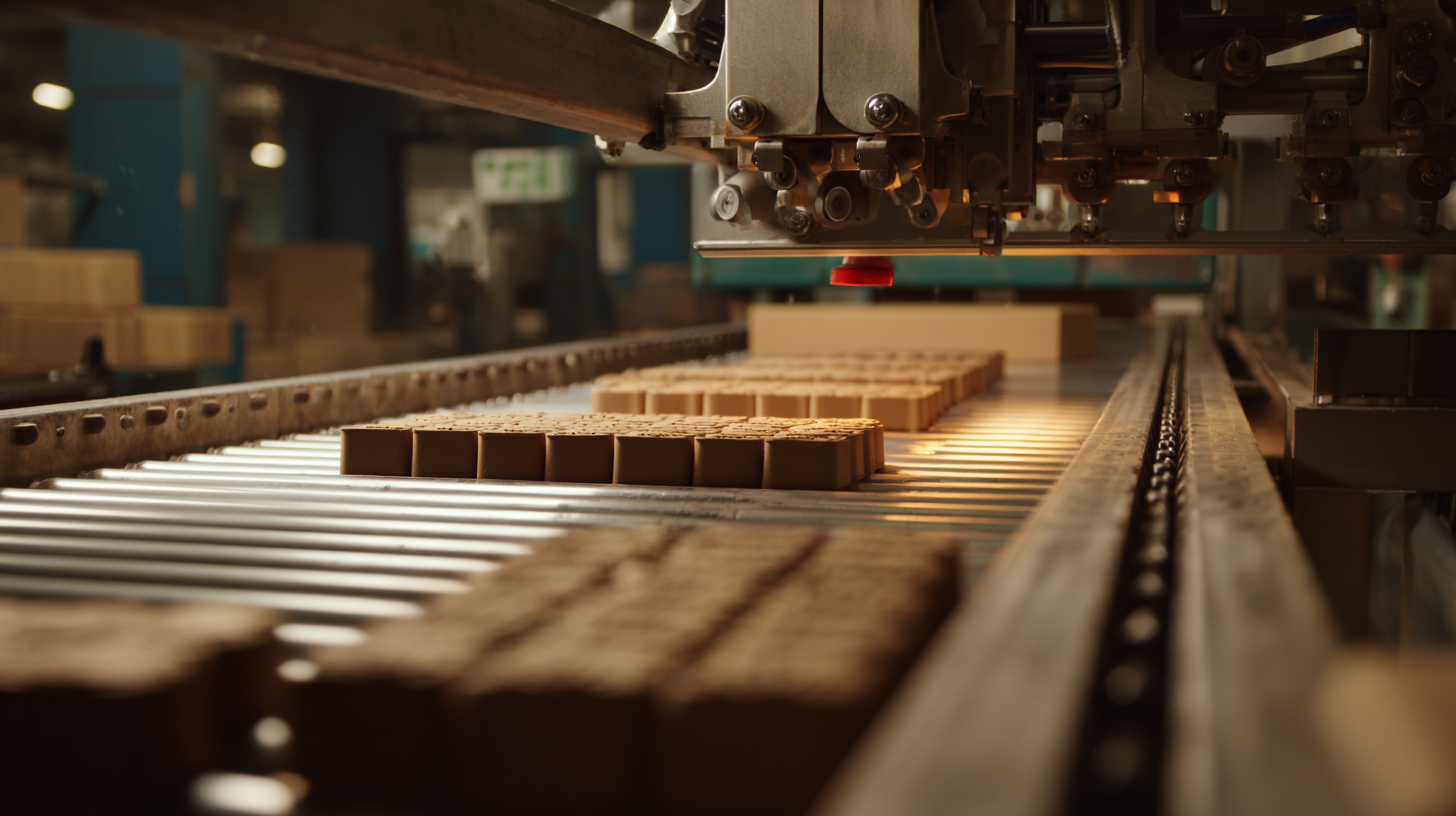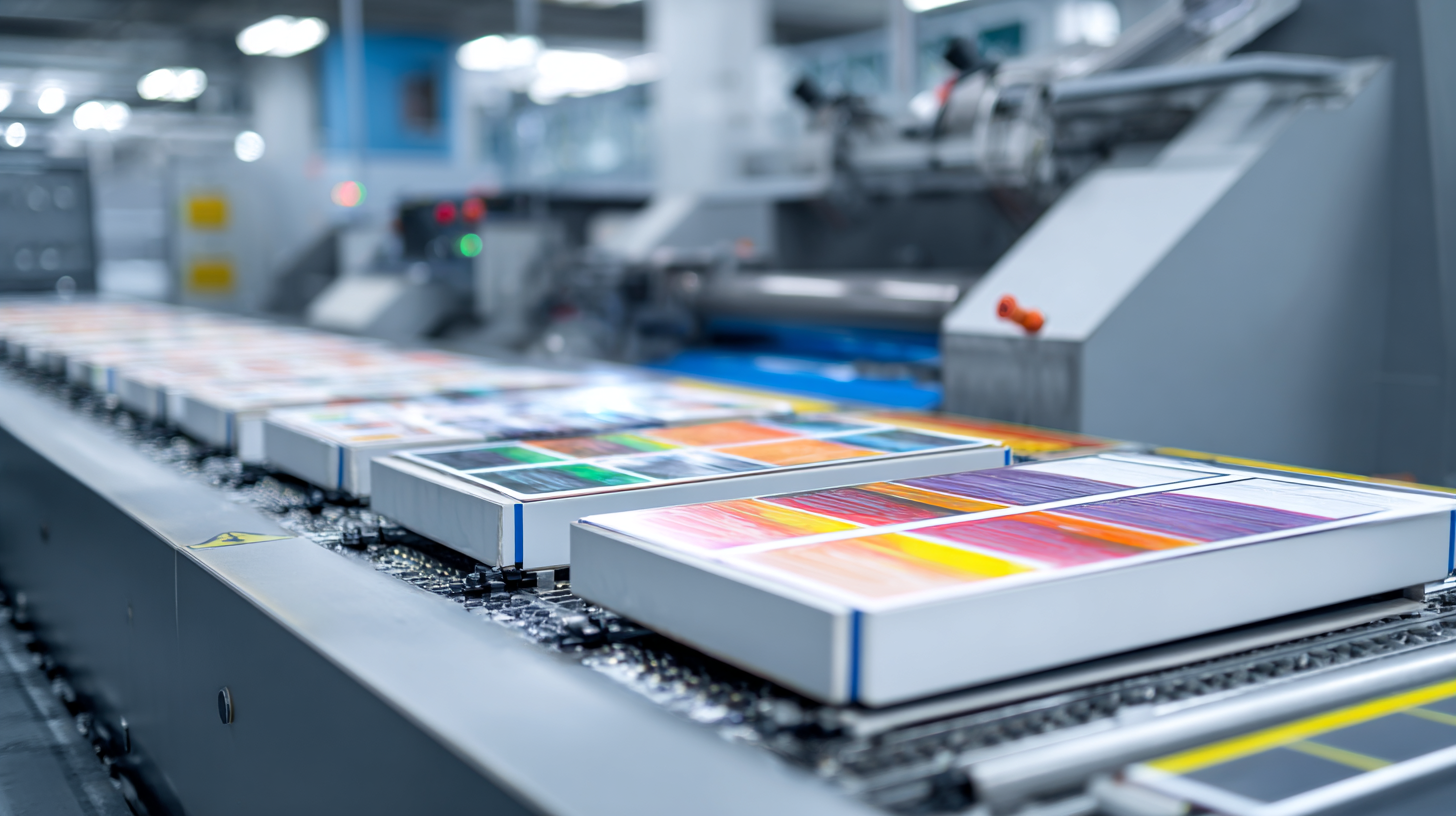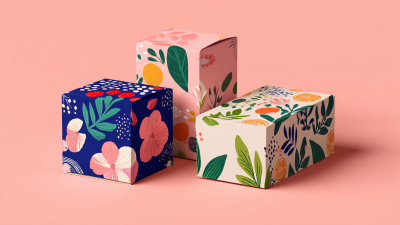- CUSTOM BOXES
- CUSTOM BAGS
- CUSTOM STICKERS
Exploring the Future of Box Printing: Innovative Techniques and Eco-Friendly Materials
The box printing industry is on the cusp of transformation, driven by innovative techniques and the urgent need for eco-friendly materials. As e-commerce continues to surge, with a projected market growth rate of 20.5% through 2027, the demand for sustainable packaging solutions in box printing becomes increasingly critical. According to a recent report by Smithers Pira, the global packaging market is expected to exceed $1 trillion by 2024, highlighting the potential impact of adopting environmentally responsible practices in this sector. Techniques such as digital printing and the use of biodegradable materials are not only enhancing the aesthetic appeal of box printing but also addressing rising consumer concerns about sustainability. As businesses seek to align with eco-conscious trends, exploring these innovative approaches will be essential for remaining competitive in the packaging arena, ultimately shaping the future of box printing.

Revolutionizing Box Printing with Digital Technologies
Digital technologies are at the forefront of revolutionizing box printing, enabling manufacturers to adopt innovative techniques that enhance processing and production. The rise of high-performance ink systems, such as polyurethane-based inks, is a game-changer for flexible packaging industries. These advancements allow for vibrant colors, improved durability, and sustainable options that align with the growing demand for eco-friendly materials. The shift to digital printing processes not only streamlines operations but also reduces waste, making it easier for companies to meet both consumer expectations and regulatory standards regarding sustainability.
In addition to inks, emerging technologies like 3D printing are similarly impacting the packaging sector, offering new ways to create customized and intricate designs. This aids in the development of interactive packaging that engages consumers and improves brand visibility. The integration of smart technologies within packaging also opens doors for enhanced supply chain management and product tracking, pushing traditional boundaries and redefining how products are experienced. As the packaging industry evolves with these digital innovations, the future looks promising for creative, efficient, and sustainable box printing solutions.

Sustainable Innovations: Eco-Friendly Materials in Box Printing
The box printing industry is undergoing a significant transformation driven by the increasing demand for sustainable practices. According to a report from Smithers Pira, the global market for sustainable packaging is projected to reach $1 trillion by 2027, growing at a CAGR of 7.7%. This surge is largely influenced by consumers who prefer products packaged in environmentally friendly materials. Innovations in eco-friendly materials, such as biodegradable and recyclable substrates, are not only attracting eco-conscious brands but also ensuring compliance with stricter regulations imposed on packaging waste.
One notable advancement in box printing is the adoption of water-based inks and soy-based alternatives, which minimizes harmful emissions and environmental impact. A study by the Environmental Protection Agency (EPA) highlighted that solvent-based inks can contribute up to 40% of volatile organic compounds in the printing process. By switching to sustainable materials, companies can significantly reduce their carbon footprint while meeting the sustainability goals of both manufacturers and consumers. As the box printing sector embraces these eco-friendly innovations, it sets the stage for a more sustainable future that aligns with global efforts to combat climate change.
Exploring the Future of Box Printing: Innovative Techniques and Eco-Friendly Materials
| Material Type | Innovation Technique | Sustainability Rating | Applications |
|---|---|---|---|
| Recycled Paper | Digital Printing | High | Retail Packaging |
| Biodegradable Plastics | 3D Printing | Moderate | Shipping Boxes |
| Mushroom-based Materials | Foam Molding | High | Protective Packaging |
| Recycled Cardboard | Laser Cutting | High | Gift Boxes |
| Water-based Inks | Flexographic Printing | High | Food Packaging |
Customization Trends: Meeting Consumer Demands in Packaging
The custom packaging industry is rapidly evolving to meet the rising demand for personalized consumer experiences. As businesses strive to enhance their brand identity and foster customer loyalty, customization trends have become crucial. Innovations in packaging design and printing technologies enable companies to create unique packing solutions that resonate with individual consumer preferences. This shift towards bespoke packaging not only enhances product appeal but also contributes to increased customer engagement and satisfaction.
Moreover, the integration of advanced technologies like machine learning and computer vision within the packaging sector is driving this customization trend. These technologies allow for efficient production processes and the ability to analyze consumer data for tailored packaging solutions. The anticipated growth of the custom packaging market, projected to expand at a CAGR of 4.6% by 2029, underscores the importance of adapting to these consumer demands. As brands continue to innovate and prioritize eco-friendly materials alongside customization, the future of box printing looks promising, balancing aesthetic appeal with sustainability.

Advanced Printing Techniques: Enhancing Quality and Efficiency
The landscape of box printing is rapidly evolving, driven by advancements in technology and a growing commitment to sustainability. Advanced printing techniques are enhancing both the quality and efficiency of packaging solutions. According to a report by Smithers Pira, the global packaging market is projected to reach $1 trillion by 2024, with digital printing taking a significant share due to its ability to produce high-quality, customized designs at a faster pace. This shift is not only beneficial for manufacturers aiming to reduce lead times but also for brands seeking unique packaging solutions that stand out on the shelf.
Emerging technologies such as inkjet and flexographic printing are at the forefront of this transformation. These methods offer precision and versatility, enabling businesses to achieve intricate designs with vibrant colors while minimizing waste. A recent study published by the Freedonia Group highlights that the adoption of digital printing in packaging is expected to grow by over 20% annually through 2027. Furthermore, the integration of eco-friendly materials, including biodegradable inks and recyclable substrates, aligns with the increasing consumer demand for sustainable practices. This evolution in box printing not only enhances product appeal but also supports environmental initiatives, positioning companies as responsible industry leaders.
Future Challenges: Balancing Innovation and Environmental Impact
As the box printing industry evolves, the challenge of balancing innovation with environmental sustainability becomes increasingly critical. According to a report by Smithers Pira, the global market for sustainable packaging is expected to reach $500 billion by 2024, driven by growing consumer demand for eco-friendly options. This shift highlights the need for printing companies to adopt innovative techniques that reduce their ecological footprint, such as using water-based inks and biodegradable substrates.
Moreover, the industry faces the challenge of sourcing raw materials that are not only sustainable but also provide the necessary performance qualities. Research from the Paper and Paperboard Packaging Environmental Council (PPEC) indicates that using recycled content in packaging can significantly lower greenhouse gas emissions, reducing them by up to 30% compared to virgin materials. Therefore, implementing advanced printing technologies that utilize these eco-friendly materials is crucial for addressing consumer expectations and regulatory pressures while ensuring that companies stay competitive in an increasingly demanding market.
